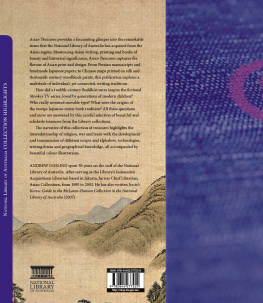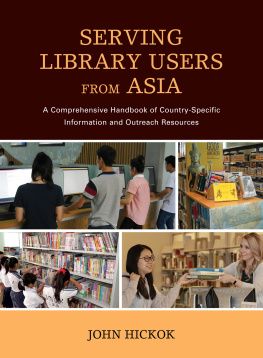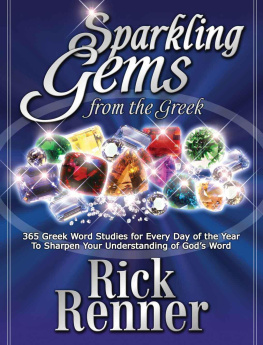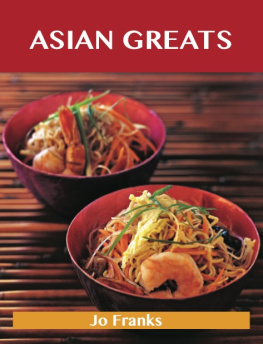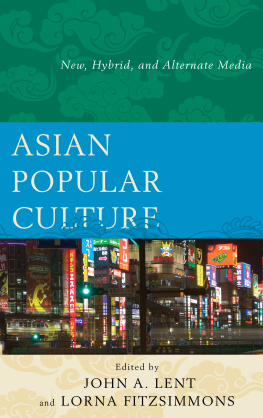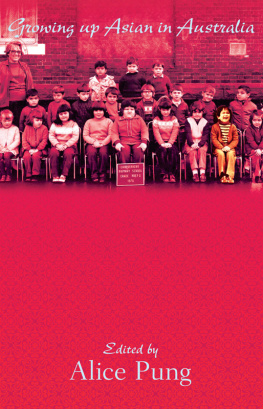Books published by the National Library of Australia further the Library's objectives to interpret and highlight the Library's collections and to support the creative work of the nation's writers and researchers.
Every reasonable endeavour has been made to contact the copyright holders. Where this has not been possible, the copyright holders are invited to contact the publisher.
This book is copyright in all countries subscribing to the Berne Convention. Apart from any fair dealing for the purpose of research, criticism or review, as permitted under the Copyright Act 1968, no part may be reproduced by any process without written permission. Enquiries should be made to the publisher.
Author: Gosling, Andrew, 1948- .
Title: Asian treasures : gems of the written word / Andrew Gosling.
ISBN: 9780642277220 (pbk.)
Subjects: National Library of Australia--Literary collections.
Libraries--Special collections.
Oriental literature.
Chinese literature.
Japanese literature.
Other Authors/Contributors:
National Library of Australia.
Dewey Number: 025.17

Illustrated Odes to the Forty Scenes of the Garden of Perfect Brightness, 2005
T he theme of this book is Asian writing, books and printing. It is illustrated with some of the National Library of Australia's most precious gems from the Asian region. All the examples are old, rare, beautiful or historically significant. Most of the titles come from East and South-East Asia, however links to South Asia, the Middle East and Western countries are also covered. While representing only a fraction of the Library's half-a-million Asian items, these works show the breadth and beauty of its resources on Asian writing cultures.
The Library houses this country's strongest library collections about Asia. The collections have been developed to meet the needs of scholars and the public. As well as printed books, periodicals and newspapers, there are maps, manuscripts, pictures and, more recently, electronic resources. The main focus of collecting has been modern Asia, but earlier history and traditional cultures have not been neglected, as is evident in this book.
In 1962 the Library established a section to acquire printed works in Asian languages. Now known as Asian Collections, it has concentrated particularly on publications in Chinese, Japanese, Korean, Indonesian and Thai. The Library has also collected many Western language items about Asia.
Asian Treasures is divided into seven sections, each covering a major topic in the history of Asian writing. They show the close relationship between religious or philosophical ideas and the written or printed word. The topics are Buddhism and the book in Asia; Islamic and Hindu art and writing; Confucianism and the book; Japanese books and printing; language, print and culture in Qing dynasty China; Indonesian writing traditions; and maps, prints and early Western missionaries in China. These subjects overlap. While there is no single Asian writing tradition, important connections exist across the region. For instance, paper, woodblock printing and movable type all originated in China and spread from there.
The examples described in this book include palm-leaf texts from Sri Lanka and Bali, magic writings on bark from Sumatra, colourful Thai and Persian manuscripts, a letter from a Manchu prince, and a magnificent collection of handmade Japanese papers. The description for each item includes its significance; how, why and when it was produced; and often how it came to the Library.
The oldest printed work in the Library is a Chinese volume dated 1162. There are Burmese Buddhist scriptures created from marble rubbings, and a huge world map in Chinese printed on silk. Two Japanese periodicals rank among the Library's most beautiful titles. They are Kokka, Japan's first art journal, and Kogei, on arts and crafts.
The Library holds many other precious old and modern Asian pieces. A longer guide to these resources will be published on the Library's website.
I would like to thank the many people who have helped in the creation of this book, in particular Amelia McKenzie and her staff in Asian Collections at the Library, as well as Dr John Caiger and Dr Ian Proudfoot.
Andrew Gosling



Phra Mlai, 1800s
B uddhism, which forms a major cultural link among the peoples of Asia from India to the Pacific, is well represented in the Library's Asian and English language collections. The historical Buddha (or Enlightened One) lived around 500 BC in northern India. He taught that to attain enlightenment all desire and attachmentthe roots of illusion and sufferingmust be extinguished. Only then will one be able to attain the freedom called Nirvana. He rejected the extremes of hedonism and self-mortification, and preached the middle way of no suffering and no pleasure. He also stressed the importance of compassion towards other humans and all sentient beings.
Buddha's teachings spread widely across Asia over a period of centuries, absorbing many other beliefs along the way. Buddhism divided into markedly different forms. Theravada, or the Doctrine of the Elders, remained closer to the early teachings, and is found today in Sri Lanka, Burma, Thailand, Laos and Cambodia. The Buddhism of China, Japan, Korea and Vietnam comes mainly from Mahayana, or the Great Vehicle. This developed a pantheon of godlike Buddhas, as well as Bodhisattvasbeings dedicated to helping others achieve salvation. Buddhism from India later reached Tibet, where it absorbed local religious practices, and in turn spread to Mongolia. In India itself Buddhism declined and then virtually disappeared by the fifteenth century.
The form of Buddhism that is perhaps best known in the West is Zen. This school arose in China then flourished, particularly in Japan. In Chinese it is known as Chan, and in Korean as Son. With an emphasis on meditation and intuitive insight, it teaches that Buddha nature exists within one's own heart and mind.

